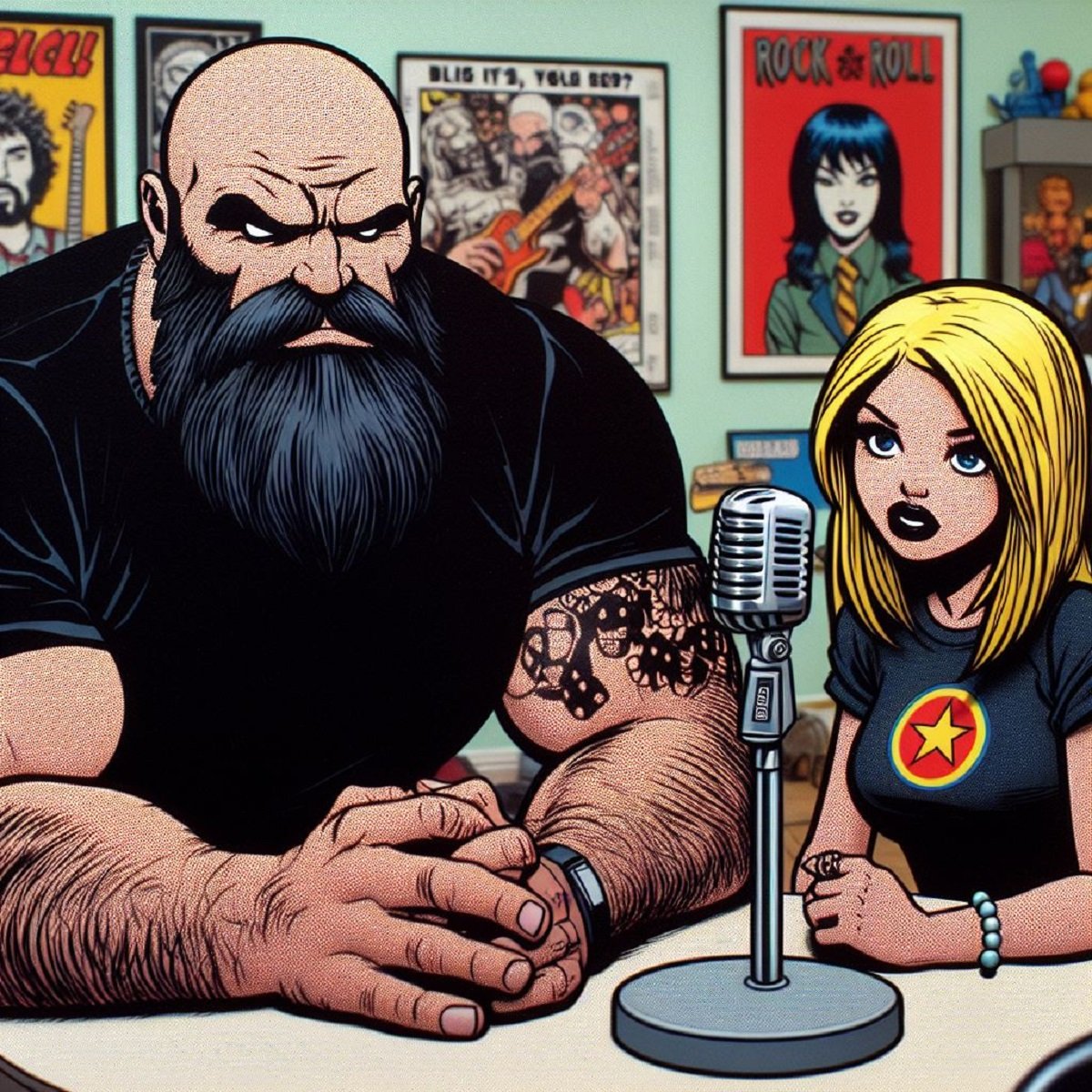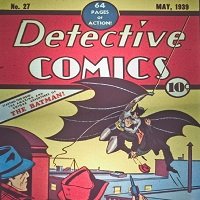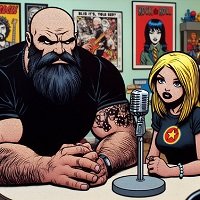I have been thinking a lot about Sgt. Slaughter lately. Sgt. Slaughter was all over my childhood experience. I was a big pro wrestling fan from the late 1970s into the 1980s when Sgt. Slaughter was a very popular pro wrestling star. I was also a huge comic book reader and action figure collector and became a fan of the G.I. Joe comic book series by Marvel Comics and the Hasbro action figure line. Sgt. Slaughter would become a major part of that franchise also.
Sgt. Slaughter played a great stereotypical Marine Drill Sergeant in the style of R. Lee Ermy’s Gunnery Sergeant Hartman in the 1987 film Full Metal Jacket… only Sgt. Slaughter did it first. In the pages of the Weston family of pro wrestling magazines (often referred to as the Apter Magazines by wrestling fans after editor Bill Apter) I cheered Sgt. Slaughter as he battled America’s enemy the Iron Sheik and had classic matches with Pat Patterson in the WWF (now WWE).
Later on, by way of videotape, I would learn of his classic matches and interviews as a heel (pro wrestling vernacular for the bad guy) for Jim Crockett Promotions and the WWF. In 1985 Sgt. Slaughter would leave the WWF following a merchandising dispute and would license his character to the Hasbro G.I. Joe franchise which would produce multiple action figures based on Sgt. Slaughter. He would also appear briefly in the Marvel Comic books G.I. Joe: A Real American Hero comic series and extensively on the G.I. Joe cartoons and the G.I. Joe animated movie. It was a great time to be a Sgt. Slaughter fan.
G.I. Joe Sgt. Slaughter action figures from the personal collection of Karl Stern.
His wrestling career, however, stuttered a little after that point. He began being more associated with G.I. Joe and action figures than with pro wrestling, despite the fact he was a top star in the Minnesota based AWA wrestling promotion. His work declined. He put on a little too much weight. He seemed to get, and I hate to use this word because I truly love Sgt. Slaughter, lazy. In 1999, Wrestling Observer Newsletter editor Dave Meltzer had this to say about Sgt. Slaughter’s qualifications to be in the Wrestling Observer Newsletter Hall of Fame, “Slaughter in the early 1980s Carolina’s and WWF was one of the best working big-men of his time and a very effective heel. In 1984, Slaughter for a short period of time was probably behind only Hulk Hogan as the top babyface in the entire business, but his work fell off from there and he spent years living off his one big year in the WWF. I don't see him as a Hall of Famer.”
And that is why I’ve been thinking a lot about Sgt. Slaughter lately. I am a voter for the Wrestling Observer Hall of Fame and, for over a decade, I have dutifully filled out my ballot every year and sent it in. I would like to think my research and trumpeting might have had something to do with pioneer Col. James H. McLaughlin getting in a few years ago. I take my vote very seriously. Slaughter, by the way, in 2019 got 51% of the vote falling just short of the needed 60% to be inducted.
However, Dave Meltzer and I differ on Sgt. Slaughter. In my mind, I see him as a pro wrestling Hall of Famer with no qualms about it. Dave feels a little differently. By 2017 Dave Meltzer had softened his stance slightly but was still anti-Slaughter, again citing his short time as a major top tier wrestler, “Sgt. Slaughter had a 1979-1984 run where he was a Hall of Fame level performer. He was a big guy who was a great worker, involved in some amazing feuds (Pat Patterson, Iron Sheik, Ricky Steamboat & Jay Youngblood, Wahoo McDaniel) and drew. It’s like the others who had the big successful run. Is it enough? That’s a question. If there are those who had twenty year runs in a top position, then three to six years isn’t as impressive. Sgt. Slaughter was also very famous, due to time, place and gimmick, being the prototype for G.I. Joe.”
Sgt. Slaughter was not, by the way, the prototype for G.I. Joe, but I concede the point and won’t squabble over semantics. He was a great fit for the well established brand and gave them an honest to goodness real life spokesperson for the toy line which I loved very dearly.
Sgt. Slaughter action figure from the collection of Karl Stern
I respectfully disagree with Dave’s belief that Sgt. Slaughter wasn’t a big time star long enough. While I would have liked to have seen his era of super-stardom run a little longer myself, his cultural impact more than makes up for the abbreviated five year window where his work was top notch. It also should be noted that his biggest accolade in the pro wrestling business came outside of that five year window when, on January 19, 1991, he won the WWF heavyweight title from the Ultimate Warrior in Miami, FL to hold the most pop culturally relevant championship in professional wrestling.
That starring role as WWF heavyweight champion did not come without controversy. As noted, Sgt. Slaughter’s best days in the ring were behind him by that point and he had been repackaged as a traitor. A turncoat heel who was no longer a brutal, but patriotic, Marine Corps Drill Instructor, instead he was an Iraqi sympathizer who touted the praises of Saddam Hussein while the first Gulf War raged. Even by WWE’s often questionable standards, this storyline was tasteless.
The story, simplistic as it was, set in motion events that would return the former top babyface in pro wrestling, Hulk Hogan, to become the WWF heavyweight champion again. America would, in fact, win out. Sgt. Slaughter would later, in storyline, repent for his sins and try to get his country back. All of this was ill advised and none of it worked out very well.
It was underwhelming to the degree that, WrestleMania 7, originally slated for the Los Angeles Coliseum, was moved to the much smaller Los Angeles Sports Arena cutting the anticipated attendance of 100,000 people down to the actual attendance of 16,158. WWF (WWE) told the press that the move was for security reasons due to the heat generated from the turncoat angle and the Gulf War creating security concerns. Many wrestling insider’s and newsletters insist that it was actually due to poor ticket sales.
No matter the actual reason, the storyline was tasteless and essentially signaled the end to Sgt. Slaughter as a main event level drawing card. Sgt. Slaughter’s deal with Hasbro had also long ended but Slaughter would remain around the WWF (WWE) for years to come in various roles both behind the scenes and in front of the camera. Everybody, it seemed, liked Sgt. Slaughter.
However, Sgt. Slaughter is the name of a character. The man behind the character is actually Robert Rudolph Remus, born August 27, 1948, and here is where things get complicated.
You see, pro wrestling, as silly as it seems, used to adhere to a bizarre code of conduct called “Kayfabe”. It’s an old carnival (or carny) term which essentially means “to keep up appearances” or act like this insanity is real. Yes, despite the fact that newspapers routinely called pro wrestling “fake” in the 1800’s, and despite the fact that actors have been respected for acting since antiquity (could you imagine a Shakespearean actor having to keep up the pretense that they were actually a Denmark Prince named Hamlet?) pro wrestling somehow felt the need to act real.
Make no mistake, it was a fun act to a degree. Also, pro wrestling was never fake. While wrestling finishes were predetermined and the participants were working with one another to entertain the crowd, pro wrestling involved tremendous athleticism and showmanship. Pro wrestling is no more fake than a circus trapeze artist. There is also no shame in being what you are.
John Rambo was an interesting character created and portrayed by Sylvester Stallone. A character he played in several movies. Yet, no one expects Stallone to pretend he was actually a Vietnam veteran with an ax to grind against society. Does anyone actually think Harrison Ford splits his time between searching for the Ark of the Covenant and traveling a distant galaxy with a giant space ape? Of course not. But for some reason the actor-athletes who are professional wrestlers, especially from Sgt. Slaughter’s era, feel compelled to “keep up the act”.
And that is where Sgt. Slaughter and I part company and why, this past year I could not, in good conscience, vote for him in the Wrestling Observer Newsletter Hall of Fame.
In recent years, wrestling has come out of the proverbial closet. It’s no longer a secret what it really is and that is fine. Wrestling is a show. Just as Game of Thrones was a show, just as Star Wars is a show, just as Joker was a show. It is very skillful actor-athletes putting on a performance. And that’s OK. In fact, done well, it can be exceptionally entertaining. A new type of interview has emerged over the last decade called the “shoot interview”. That phrase may sound strange to the uninitiated but a “shoot” in pro wrestling lingo means “real or legitimate”. It’s the difference between talking to Rambo and talking to Sylvester Stallone.
Yet, time and time again, in these “shoot” segments or interviews, or in a context where Bob Remus is talking and not Sgt. Slaughter (such as a newspaper interview), Robert Remus has sometimes outright stated or been coy about his actual military service.
Wait, Sgt. Slaughter was actually a member of the United States Marine Corps right? Well, yes. I suppose, in fiction, the character of Sgt. Slaughter was a Drill Sergeant in the United States Marine Corps just as much as he was part of the anti-terrorist organization G.I. Joe out to stop the forces of Cobra. Robert Remus, however, maybe not so much.
To say that Robert Remus has been vague, or at least misleading, about his actual service in the U.S. military is putting it mildly. His Wikipedia page, which can be edited by anyone including, presumably Robert Remus, states clearly that, “Remus legitimately enlisted in the United States Marine Corps…” (As of January 8, 2020 anyway)
You will notice a citation about that fact as footnote “5” which directs to an unsourced article called “Cereal Liars” which states without any citation of it’s own that “Sgt. Slaughter comes about his military rank legitimately…”
UPDATE: Following publication of this article the Wikipedia page has been updated to state he was not in the Marine Corps citing the Baltimore Sun article from 1985.
Text from Sgt. Slaughter’s Wikipedia page stating he was legitimately in the marine Corps (though not an actual drill instructor) but the citation goes back to an article with little citation of it’s own.
The Sgt. Slaughter wikipedia article cites this as it’s source for Slaughter having actually served in the Marines. It’s from a Time Magazine newsfeed blurb which offers no sources of it’s own titled Cereal Liars?
Not so fast says the Baltimore Sun newspaper in a March 24, 1985 article. The article states, “Government records reveal Slaughter, a.k.a. Robert Remus, never served time in the U.S. Marine Corps, though he claims to have been a drill instructor from 1966 to 1973.” According to the article, the USMC even sent a letter to Robert Remus telling him to stop representing himself as a former Marine.
That isn’t what happened however. In the thirty-five years since then, Robert Remus has continued to either state he was in the Marine Corps or side step the question. An interview posted on YouTube has Remus saying he did two tours of duty in Vietnam. Another print interview quotes him as saying, “I was actually born in Beaufort, S.C. My father was in the Marine Corps at Parris Island and we lived in a farm back in Minnesota. When he was out of the Corps we moved back there. When it was time for me to get out of high school, [my parents] really couldn't afford to send me to college, so my father suggested maybe I want to join the Corps, join the military service and maybe do college later. So I thought, "Well, that's probably what I'll do, so I'll go into the Marine Corps and I'll go to college when I get out." I got halfway there, ended up at a pro wrestling training camp on leave, and I got into a little scuffle with the British Empire champion Billy Robertson and I knew that's what I wanted to do.” In the same sentence he seems to say he backed out of going to the Marines “halfway there” yet went to wrestling camp while “on leave”.
As recently as July 2019 in an article from the Miami Herald, Remus is mixing reality with the fantasy of being a real Marine drill instructor.
Miami Herald article from July 2019 Mixing real life Bob Remus with Claims (by the newspaper, it is unclear if this is information supplied by Remus or the Miami Herald spinning their own story) that Sgt. Slaughter is a real “hero” and former U.S. Marines drill instructor.
Sgt. Slaughter, the character, can say anything he wants. He’s fictional, so I guess he can have any sort of backstory he, Hasbro, or WWE pleases. I’m not even throwing an outrage over stolen valor or anything that sinister. But I do think there needs to be a line of respect drawn. The United States military and the United States Marine Corps are full of people who sacrifice and serve their country. Some even die for it. Post Traumatic Stress Disorder (PTSD) and depression is leading to, on average, 22 people per day taking their lives because of real, not fake, military service and the hardships, stress, and trauma that comes with it.
I cannot in good conscious vote for the character of Sgt. Slaughter to be included in the Wrestling Observer Hall of Fame until the human being Robert Remus stops doing this. I am not even going so far as to ask for an apology or retraction, though I would gladly print it if one came. And absolutely, without question or hesitation, if Robert Remus provided some sort of evidence or proof he ever signed up for the United States Marine Corps and what his actual real status was I would certainly include that here and give the man the credit he is due.
I love G.I. Joe. I love pro wrestling. I love the character of Sgt. Slaughter. I humbly ask the man who is 71 year old Robert Remus to consider setting the record straight. There is no shame in being a great character, I would argue a Hall of Fame character. No shame at all in a job well done. Just be clear and don’t steal nor diminish the valor of true real American heroes while doing so.
If you found this article interesting consider becoming a Patreon supporter. That is how When It Was Cool keeps our website and podcasts online, plus you get lots of bonus content including extra and extended podcasts, articles, digital comics, ebooks, and much more. Check out our Patreon Page to see what's up!
If you don't want to use Patreon but still want to support When It Was Cool then how about a one time $5 PayPal donation? Thank you!
























































